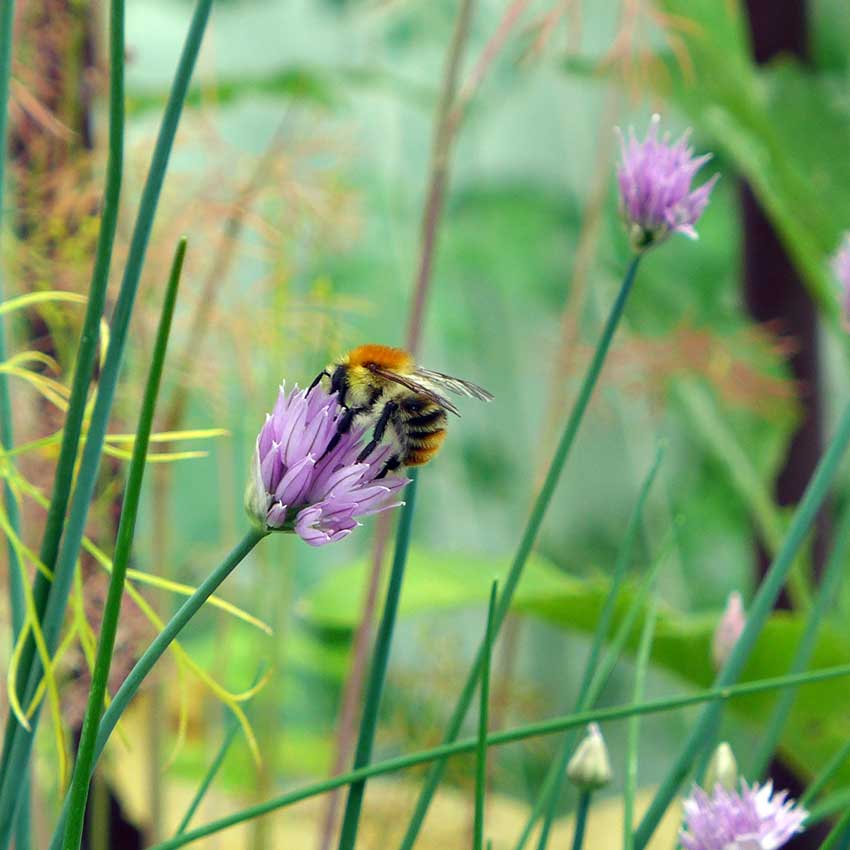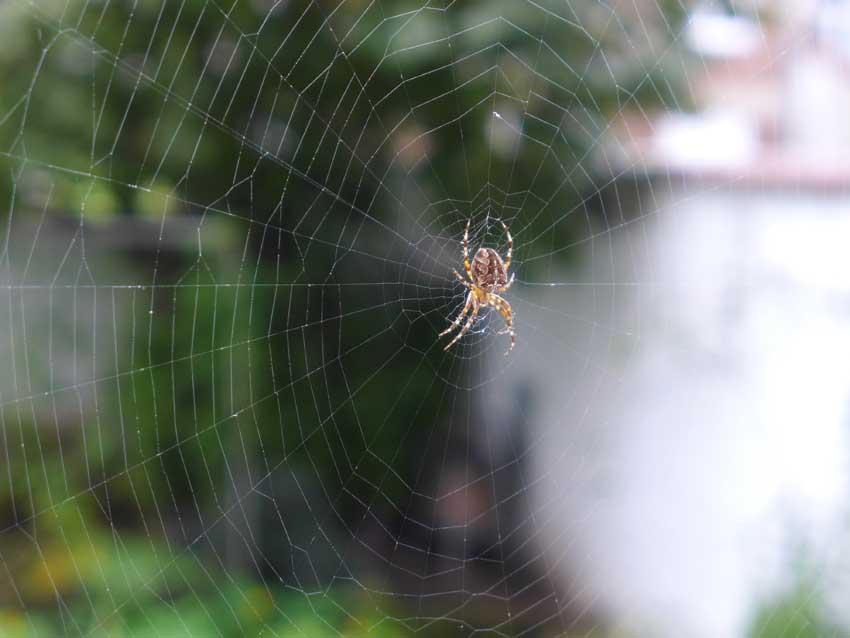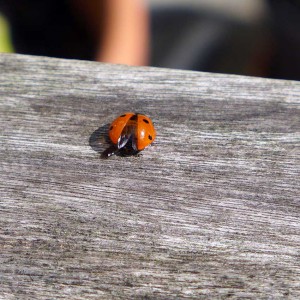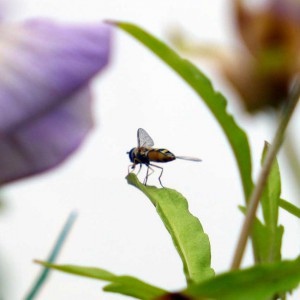
A garden is a veritable jungle of plant and animal life, if you know where to look. It forms part of an ecosystem that spreads across the city providing transit corridors for a wide variety of bird and insect life. Turning a garden into a “wayside cafe” for these travellers is an important aspect of gardening and biodiversity conservation.
The facts of life are these – biological diversity is the web of life between all living organisms on earth, plants, animals and humans. Humans are presently using more natural resources than the planet can sustain or replace through natural processes. This loss means millions of people face a future where food supplies are vulnerable and fresh water supplies are diminishing.
Permaculture (permanent culture) is about a working relationship between people and the natural world that seeks to find a sustainable balance for resource use that leaves something for future generations. A garden is a small but significant opportunity for contributing to the sustainable use and conservation of global biological diversity.
The garden
Gardeners appreciate that soil is a living entity, made up of thousands of microbes and organisms breaking down organic material and creating the perfect growing conditions for plants. In making compost for use in the garden the gardener mimics the same natural process to create a rich living medium, full of life essential to the garden’s health.
This living ecology extends above the soil, to the insects and bugs that populate the garden, the birds and bats that visit the garden and the bees and hover-flies that perform essential roles in maintaining the garden’s health and productivity.
City gardens are urban hotspots for biodiversity in that they provide many of the habitat needs of local flora (plants) and fauna (animals). Organic gardening particularly encourages biodiversity conservation as part of integrated pest management strategies aimed at building the garden’s natural resilience to pests and disease.
In a city garden biodiversity includes trees, plants, birds, bees, small mammals, insects and the microbes found in the soil. City gardens along with public green spaces can make up to 30% of the urban environment. While cities create problems of habitat loss, light and noise pollution, invasive species, chemical runoff and pollution that all affect biodiversity, gardens can act as important niches for developing and supporting a healthy local ecology.
Studies have shown that city gardens contain an unexpectedly high diversity of plant and animal species, both indigenous and exotic, constituting a substantial proportion of any country’s biodiversity. This suggests that gardens, and cities in general, may surprisingly act as important conservation areas for plant and animal species in contrast to the cultivated rural landscape in which biodiversity continues to decline.
When looking at urban biodiversity it is important to understand scale and movement. Birds exist over large ranges and move seeds over large areas. Ecological movement, as it is sometimes called, indicates urban gardens can provide rich and fertile conditions for a wide range of species at the regional and national level.
Urban gardens form a patchy network of island habitats within regional biodiversity. While individual gardens cannot by themselves maintain viable species populations, management of collections of gardens across scales from the neighbourhood to the city can greatly improve regional biodiversity conservation.
While cities may not appear ideal habitat for wildlife many species have adapted to urbanisation and form beneficial relationships with human activity. Supporting this local ecology is as much an output of gardening as the tomatoes, beans and cucumbers grown in the garden.
Birds
Birds are the gardener’s natural friends. To feed their young, birds catch large quantities of adult and larval insects, many of which are considered garden pests. Encouraging birds into the garden is a central component of any natural integrated pest management strategy.
Birds transport a variety of things through the environment but are particularly important for plant reproduction through their services as pollinators and seed dispersers. These beneficial relationships between birds and the flora of an ecosystem mean birds act as bio-indicators for the general health of the environment. A healthy environment has lots of birds.
As bird extinctions and population declines disrupt ecosystem processes and services of potential importance to society, local bird populations are important indicators of regional environmental changes over the long term. Volunteer monitoring of garden birds provides important data to national conservation strategies and to the effects of climate change on local wildlife.
Garden birds benefit most from feeding all year round, but winter is a time to provide foodstuffs with a high fat content to supplement their diet. Birds will eat insect pests year-round in the garden if they are provided with the basic necessities to attract and keep them nearby. Encouraging a good range of birds into the garden is basic gardening good sense.

Bees
Insects form the largest group of living creatures in a garden. In Europe there are over 20,000 species of insect. They outnumber people by 250,000 to 1.
In general gardening terms insects are divided into two types, beneficial insects and pests. This can lead to a misunderstanding that the gardener wants more of one and less of the other. This is not the case. The gardener requires a stable and balanced population of both.
The best known of the beneficial insects are the pollinators, the bees, wasps and butterflies. They carry pollen grains from the anther to the stigma parts of the plant to allow pollination to occur. Bees enable one third of food crops to produce fruit and seed.
Recent research suggests that neonicotinoid pesticides are affecting bee numbers. These have been banned by the European Union, however the UK and USA governments are resisting imposing an outright ban. The varroa mite (varroa destructor) a parasitic mite of honey bees has also been blamed for the weakening or complete loss of honey bee colonies. Whatever the cause bee populations are in serious decline and require conservation.
The planting of brightly coloured nectar rich flowering plants in a garden or on a window sill is a simple contribution anyone can make to helping bee populations. Most vegetables produce flowers attractive to bees, particularly tomatoes, beans cucumbers and herbs.
The basic rule for biodiversity conservation in a city garden is to avoid poisoning the wildlife through the inappropriate use of pesticides or fertilisers. Organic gardening using mixed composts and natural supplements such as seaweed extracts or animal manure ensures the garden develops a natural resilience to disease and pests, avoiding foreign introductions, particularly chemicals.
A healthy garden is one full of bird and insect life. Pictures of plants bearing lots of produce do not show this living ecology properly. To understand the biodiversity in a city garden takes time and an inquisitive eye. Once understood, the tomatoes and beans become secondary to the native wildlife population that make up the ordinary city garden.

